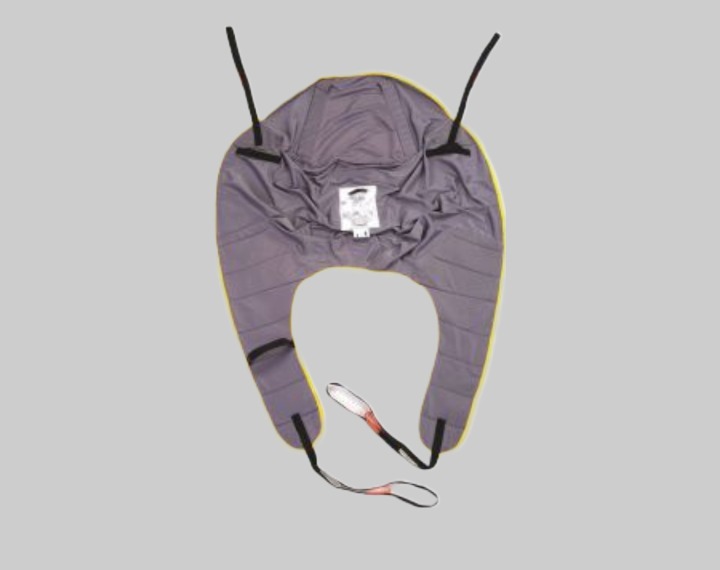Sling Safety Checks: Why These Are Crucial
 In care environments when slings are being used constantly to help transfer residents to and from different destinations within a care facility, it’s essential that sling safety is taken seriously. If a sling is not properly cared for, over time damage to the sling can occur which can mean that resident safety may be compromised.
In care environments when slings are being used constantly to help transfer residents to and from different destinations within a care facility, it’s essential that sling safety is taken seriously. If a sling is not properly cared for, over time damage to the sling can occur which can mean that resident safety may be compromised.
When a care home resident suffers from mobility problems, often the safest way to move them from place to place is via the use of a hoist and sling. However, if sling safety checks are not put in place, this can lead to accidents occuring, which can cause serious injuries to residents and staff alike, which is why taking safety serious is so vital. In addition to this, ensuring that all maneuvers are performed in a safe manner is crucial, for both your residents and your team members.
Bearing that in mind, below is a guide to performing sling safety checks and why doing so is a crucial aspect of using slings in your residents’ care plans.
Slings should always be checked before use
Before using a sling, it is crucial that the sling is carefully checked for any problems. By checking a sling before use, you and your team members can ensure that the sling is fit for purpose, which is a vital step that should be taken before use. This is essential for a number of reasons, including that if the person being lifted is not lifted in a safe manner, they could sustain injuries. The most common injuries that residents sustain from being unsafely lifted are bruises, scrapes, breathing problems, and in more severe cases, broken or fractured bones if dropped, which is what makes damaged slings so dangerous.
As well as the potential to cause injuries, moving residents in an unsafe way can also lead to legal implications for your care facility. Which is another reason why it’s so important to get it right when it comes to moving your residents. According to the Health and Safety Executive website, the most important things are to avoid the need for dangerous moving, assess all risks of injury, and reduce these risks as far as possible, one of the ways of doing so is ensuring that all slings are always checked before use.
Start by carefully checking the sling over. What you want to be looking for are any signs of damage, such as frayed seams, frayed loops, fading or signs of wear, tears and holes should also be looked out for. If you notice any of these issues, then it is most probably time that you replace the sling with a new design. Resident and team member safety should always come first, and if a sling is damaged in any way it is not safe or fit for purpose.
Do all mechanisms lock in place correctly?
Once the material has been checked for any damage, the next step is to check whether all mechanisms lock in place correctly. It’s important to take the time to look carefully at the sling to determine if all mechanisms are working correctly. This is particuarly important if the sling has a clip on it - taking the time to check this for any problems is vital.
If you are unsure whether a mechanism is working correctly, it’s important that the manufacturer or person in charge of checking the equipment in your care facility is informed. Equipment should not be used if there is a concern over the safety of any aspect of it.
Although all of the hoists and slings that we sell are designed to be easy and safe to use, it’s still crucial that all lifts and hoists are set up and installed by one of our skilled team members. It’s also important that all equipment is properly maintained and serviced - this helps to prevent accidents and injuries due to wear and tear of equipment.
An important step for making the use of slings safer is by ensuring that all team members are properly trained in how to use them. This means that not only should staff receive training when they first start working in your care home, but also on a regular basis, to ensure that they are kept up to date with any new equipment or changes to how a lift or sling works.
Do you have an adequate number of slings to prevent cross-contamination of infection?
Another key aspect of performing sling safety checks is ensuring that your care facility has the adequate number of slings required to ensure that there is no risk of cross-contamination due to issues like infection, for instance. There is no set amount of slings that any one care environment should have in place, the type and amount of slings required will vary according to the specific needs of the the care service users. The key thing to consider in these instances is the needs of each individual within your care environment and their specific needs. It’s also essential to consider what the sling is being used for, and to determine how the sling can be kept hygienic.
It's important to bear in mind that when a sling has been overused or has become warn, it's important to replace it with a high-quality alternative that is well-designed and fit for purpose. At CLH, we have a wide range of slings available - you can view our full range via our website.
There you have it, everything that you should know about sling safety and keeping your care environments slings safe and fit for purpose. The most important thing to remember when it comes to sling safety is taking the time to check slings properly before use, and ensuring that all team members are properly trained to do the same. By taking this step, you can significantly reduce the risk of injuries or accidents occuring.





